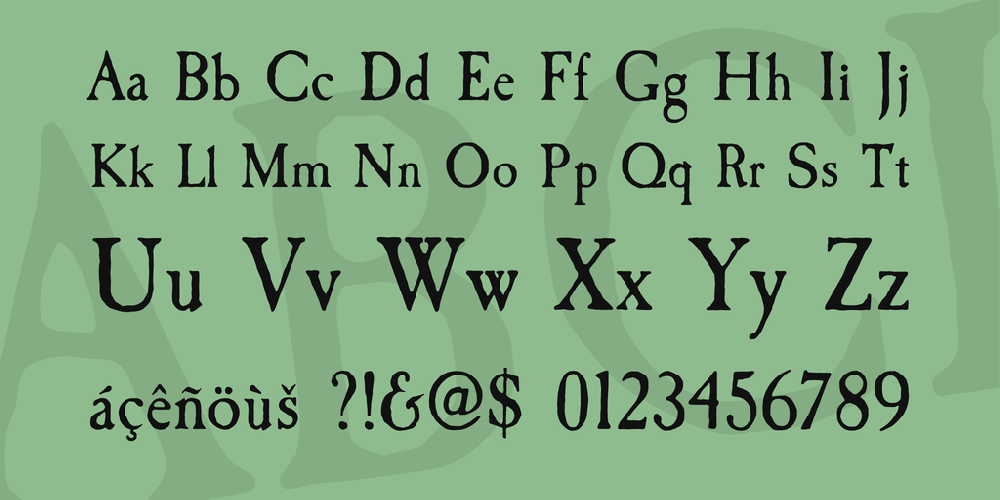

Peterson as "a pallid imitation of Caslon" and Mosley as "bland". While recognising its practicality in his book A Tally of Types, Stanley Morison described it in 1935 as "a sort of diluted version of Caslon", William Morris's biographer William S. Reviews of the aesthetic quality of Old Style have often been low since the end of the nineteenth century, despite its precise and careful design, and it declined in popularity during the twentieth century. ) Legros and Grant parodied the large number of copies of Old Style in their 1916 textbook on printing technology, Typographical Printing Surfaces, by printing a poem with different lines in different copies. (Ronaldson Old Style by Alexander Kay was another, as was Phemister's own later Franklin, created after he had emigrated to the United States. Besides simple copies, it helped to create a genre of a wide range of loose revivals and adaptations of the Caslon design, visible in the wide-spreading arms of the T and the sharp half-arrow serifs on many letters. Monotype's copy was their second best-selling typeface of all time in hot metal. It was also copied by the new hot metal typesetting companies Monotype and Linotype. Released at a time when Caslon type was coming back into fashion, Old Style became a standard typeface sold by many foundries. Old Style Italic in a Miller & Richard specimen. The typeface Bookman Old Style is a descendant of a bolder version of the Old Style face, known in the nineteenth century as Old Style Antique. It is sometimes classified as a "transitional" serif typeface (in the vein of typefaces of the eighteenth century such as Baskerville) due to these modernisations.


Walter Tracy and others have used the term "modernised old style" to describe the Miller & Richard designs to reduce ambiguity, although "Old Style" was the name under which Miller and Richard sold it as. The name "old style" is confusing, as it and "old face" have been used differently by different authors to refer to "true old-style" printing types from around 1480–1750 (and relatively authentic copies of them) and the new "Old Style" face of Miller & Richard and its imitations, which appear rather different. The two-way Q recalls the Baskerville type of the mid-eighteenth century. The letters are rather wide and the italic is evenly, and rather strongly slanted. Like Caslon, Old Style has slanting top serifs and an avoidance of abrupt transitions of weight, but compared to Caslon it is much lighter in colour and the stress is vertical (the top of the round letters uniformly the thinnest part of the letter, rather than at a position of roughly eleven o'clock), reflecting changes in taste since the eighteenth century.


 0 kommentar(er)
0 kommentar(er)
